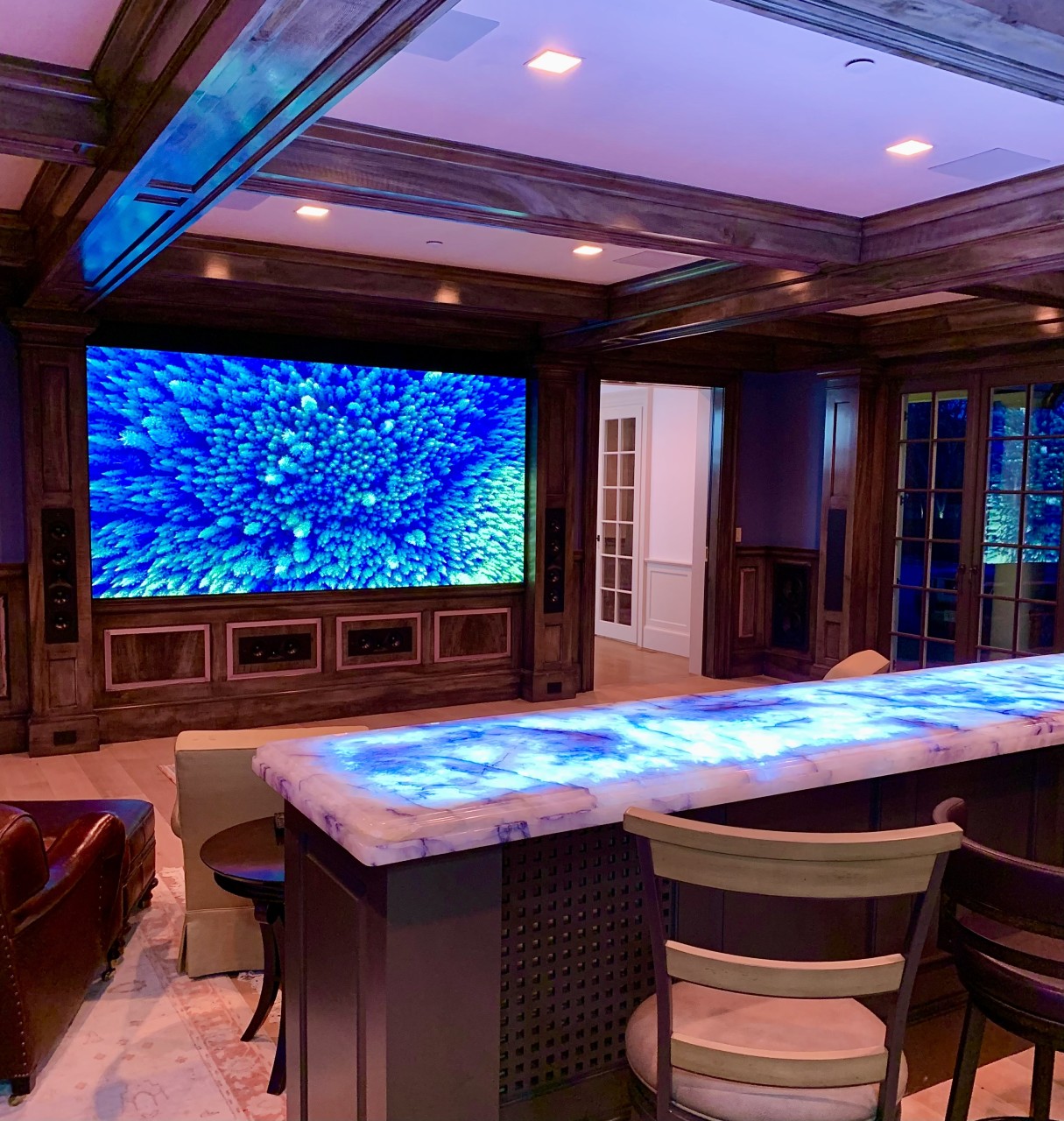In the realm of display technology, one innovation is capturing the attention of tech enthusiasts and industry experts alike: MicroLED. Think “Video Wall” or arena display but paired down for the home or office. MicroLED allows the largest screen sizes without the brightness or color drop experienced from a screen and projector. This cutting-edge technology is revolutionizing the way we experience media, offering unparalleled picture quality, durability, and versatility. In this blog post, we'll delve into the world of MicroLED technology, its main competitors, and its evolution over time.
Understanding MicroLED Technology
MicroLED, short for micro-light-emitting diode, represents a significant leap forward in display technology. Unlike traditional LCD and OLED displays, which rely on backlighting or organic compounds to emit light, MicroLED displays are composed of microscopic LEDs that emit their own light. This allows for precise control over brightness, color accuracy, and contrast, resulting in stunning visuals that captivate the viewer. “Pixel pitch” or how tightly the LEDS are placed next to each other is one way to to measure the clarity the naked eye will experience.
Main Competitors in the MicroLED Space
Several major players are leading the charge in developing MicroLED technology, each bringing their own unique innovations and expertise to the table. Among the key competitors are:
- Samsung: A titan in the electronics industry, Samsung has been at the forefront of MicroLED development, showcasing impressive advancements in display quality and scalability. Their MicroLED displays offer stunning brightness, high resolution, and seamless integration with other smart devices.
- Sony - Crystal LED (BH & CH Series): Renowned for its prowess in imaging technology, Sony has been investing heavily in MicroLED research and development. Their MicroLED displays boast exceptional color accuracy, deep blacks, and fast response times, making them ideal for gaming, home theater, and professional applications.
- LG “Magnit”: Leveraging its expertise in OLED technology, LG Display is pushing the boundaries of MicroLED displays with innovations in panel size, energy efficiency, and flexibility. Their MicroLED panels are designed to deliver immersive viewing experiences while minimizing power consumption and environmental impact.
- Planar DirectLight UltraSeries: A leading provider of display solutions, Planar is making waves in the MicroLED market with its state-of-the-art video wall systems. These modular displays allow for seamless integration of multiple panels, enabling the creation of large-scale visual installations for corporate, retail, and entertainment venues.
- Ventana powered by Megapixel VR: A rising star in the MicroLED arena, Megapixel Ventana has garnered attention for its groundbreaking display technology. Their technology is often used in replacing “green screens” for Hollywood blockbusters. Their flagship product, the Megapixel Ventana display, combines the unparalleled clarity of MicroLED with innovative features such as seamless bezel-less design, customizable aspect ratios, and advanced image processing capabilities. Ideal for high-end commercial applications, the Megapixel Ventana is redefining the standards of visual excellence. Their award winning video processing product "Helios" sets them apart from others.
Advantages of MicroLED over Previous Technologies
While traditional display technologies such as projectors and LCDs have their own merits, MicroLED offers several distinct advantages:
- Superior Picture Quality: MicroLED displays provide unmatched brightness, contrast, and color accuracy, delivering images that are more lifelike and immersive compared to projectors or older LCD displays.
- Durability and Longevity: MicroLED panels are known for their long lifespan and resistance to burn-in, making them ideal for applications where displays are constantly on, such as digital signage and video walls.
- Flexibility and Scalability: MicroLED technology allows for the creation of large scale displays with seamless integration of multiple panels, offering greater flexibility in design and installation compared to traditional projectors or LCD video walls.
- Energy Efficiency: MicroLED displays are more energy-efficient than traditional projectors, consuming less power while providing brighter and more vibrant images.
- Maintenance-Free Operation: Unlike projectors that require regular lamp replacements and calibration, MicroLED displays are virtually maintenance-free, reducing downtime and operating costs over time.
MicroLED represents a significant shift in technology, offering unparalleled clarity, color, energy efficiency, durability, and versatility on a large architectural scale. With leading companies like Samsung, Sony, LG Display, Planar, and Megapixel Ventana driving innovation in this space, MicroLED will redefine the way we experience visual content. Whether it's creating immersive gaming setups, interactive digital signage, or jaw-dropping video walls, MicroLED displays are redefining what is possible for visual entertainment in design oriented interiors, museums, showrooms and businesses. Take MicroLED technology seriously as you consider display choices when designing your media viewing for the long term.










